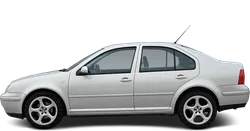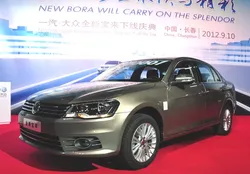

Volkswagen Bora Generation 2 Overview
Explore the Volkswagen Bora, particularly the Generation 2 model and its 2012 facelift for the China market. Discover features and specifications of this iconic vehicle.
The Volkswagen Bora, a compact sedan produced by the German automaker Volkswagen, has witnessed several transformations throughout ...
History and Features
Mycarro AI
Apr 27, 2025
Introduction to the Volkswagen Bora Generation 2
The Volkswagen Bora, a compact sedan produced by the German automaker Volkswagen, has witnessed several transformations throughout its various generations. The second generation was notably significant, especially in the Chinese market where it showcased distinct adaptations to meet local preferences. The 2012 facelift marked a crucial update that aimed to refresh the model while maintaining its reputable standing in the compact sedan segment.
Design Enhancements
The 2012 facelift of the Volkswagen Bora Generation 2 brought new design elements that modernized the vehicle's appearance. The front fascia was completely overhauled, featuring a new and prominent grille that donned the iconic Volkswagen emblem, flanked by sharper, more angular headlights. This redesign not only enhanced the car's visual appeal but also provided better illumination. Fog lamps were integrated into the lower bumper, complementing the overall sporty look of the vehicle and offering additional functionality.
From the side, the Bora maintained its classic sedan proportions but was improved with subtle character lines that ran along the body, adding a sense of dynamism. The rear end received attention too; redesigned taillights and a more refined bumper provided a cohesive look with the front. These changes helped the car maintain its competitive edge, appealing to consumers looking for style as much as performance.
Interior Comfort and Technology
Inside, the 2012 facelift of the Volkswagen Bora Generation 2 placed a significant emphasis on comfort and technology. The updates introduced higher-quality materials in the cabin, making it feel more upscale and inviting. The instrument cluster was redesigned for better readability, featuring modern graphics and an updated layout that catered to contemporary driver expectations.
In terms of technology, the facelift included an upgraded infotainment system. The new system was equipped with advanced connectivity options, syncing seamlessly with mobile devices and allowing for hands-free functionalities. Buyers in the Chinese market appreciated these enhancements, as they aligned with the rising demand for tech-savvy vehicles amidst a rapidly evolving market landscape.
Performance Adjustments
The 2012 facelift of the Volkswagen Bora Generation 2 also brought about performance tweaks to enhance driving dynamics. The model retained its trusted engine lineup but introduced refinements to improve fuel efficiency and reduce emissions. The powertrain was engineered to deliver a smoother driving experience, characterized by responsive handling and a comfortable ride quality – crucial elements for consumers navigating urban environments.
The suspension system received adjustments, allowing for better road feedback while ensuring a stable ride on both smooth and uneven surfaces. These improvements were particularly welcomed by those in the Chinese market, where road conditions can vary significantly between urban and rural settings.
Safety Features
Safety is a key consideration in the automotive industry, and the 2012 Volkswagen Bora facelift was no exception. It received updates in its safety technology to align with local safety standards and consumer expectations. The vehicle was equipped with enhanced braking systems and the inclusion of additional airbags, thus improving occupant protection during collisions.
Moreover, advanced safety features such as electronic stability control and anti-lock braking systems became standard offerings. These improvements solidified the Bora's reputation as a reliable family sedan that prioritized passenger safety without compromising on comfort or style.
Market Reception
The facelifted Volkswagen Bora Generation 2 was well-received in the Chinese market, where demand for compact sedans continued to grow. Consumers appreciated the blend of practicality, modern design, and technological advancements that the facelift introduced. The model’s pricing was competitive, further cementing its appeal among budget-conscious buyers who sought value without sacrificing quality.
Additionally, Volkswagen’s established brand reputation in China played a significant role in bolstering consumer confidence. The Bora became a popular choice not only for families but also for young professionals seeking a reliable commuter vehicle.
Conclusion
In summary, the 2012 facelift of the Volkswagen Bora Generation 2 for the China market represented a significant evolution of the model. With enhancements in design, comfort, technology, performance, and safety, Volkswagen successfully adapted the Bora to meet the diverse needs of Chinese consumers. The Bora continued to embody the essence of Volkswagen, combining German engineering with a keen understanding of local market demands, making it a standout choice in the compact sedan category.
